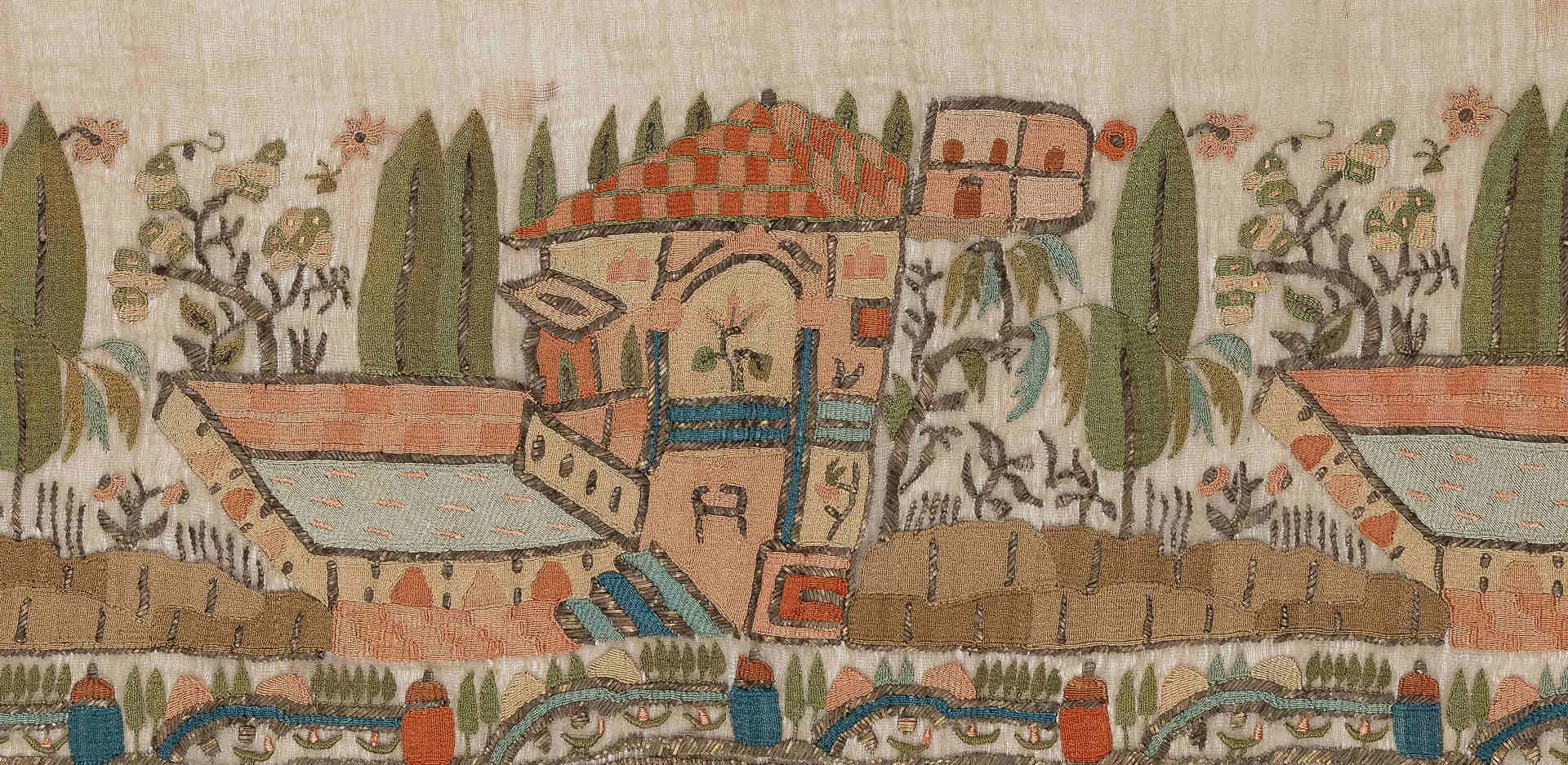Embroidered Gardens Ottoman Textiles from the Borg Collection
Towel with embroidered depictions of houses and gardens, detail, Turkey, late 18th century © Staatliche Museen zu Berlin, Museum für Islamische Kunst / Claus Uhlendorf
This special presentation in the Pergamonmuseum’s book art cabinet affords a glimpse into one of the strands in the rich textile tradition of the Ottoman Empire: alongside carpets and woven fabrics, lesser-known embroideries also played a major role in this tradition, predominantly in domestic contexts in urban areas. These pieces formed part of the dowry of every young woman and were cared for like treasures.
This exhibition showcases towels, serviettes and sashes from the 16th to the 19th century from the Borg Collection. These exquisite works were generally produced in domestic settings, though a number of the particularly intricate embroideries were produced in workshops by professional embroiderers.
Embroideries with Prestige
The embroideries were made on a rectangular frame on four legs, in front of which the embroiderers would sit on the floor. Finely woven fabrics made of silk, linen and cotton were used to make the works. The embroidery threads were coloured with natural dyes and were usually made of silk, and were sometimes embellished with silver or gold thread. Usually, a border was embroidered on the shorter ends of the fabric. The embroideries are so finely wrought that they look identical from both sides, meaning there is no front and back. We can assume that these fine towels and serviettes have never been used. What is certain, though, is that their primary role was as part of a bride’s dowry, and they would have been placed on display in this function.
Tradition and Variation
The motifs, patterns and techniques of these embroideries were passed down over centuries. Nevertheless, it is possible to identify trends and fashions alongside these traditional forms of ornamentation. For example, from the 18th century onwards, we see an increased use of European and Chinese designs and embroidery techniques. Looking at the motifs, a strong preference for flowers and depictions of flora becomes apparent. A pronounced interest in these forms can be discerned as far back as the 16th century in Ottoman art, and can be found on almost all materials and in various techniques, be it tiles from Iznik, velvet from Bursa or the miniature painting of Ottoman book arts. In the embroideries, however, these forms are interpreted more freely, sometimes diverging dramatically from the classical courtly style of the Ottoman Empire. At the same time though, we can also make out regional techniques and motifs.
A special presentation by the Museum für Islamische Kunst – Staatliche Museen zu Berlin
